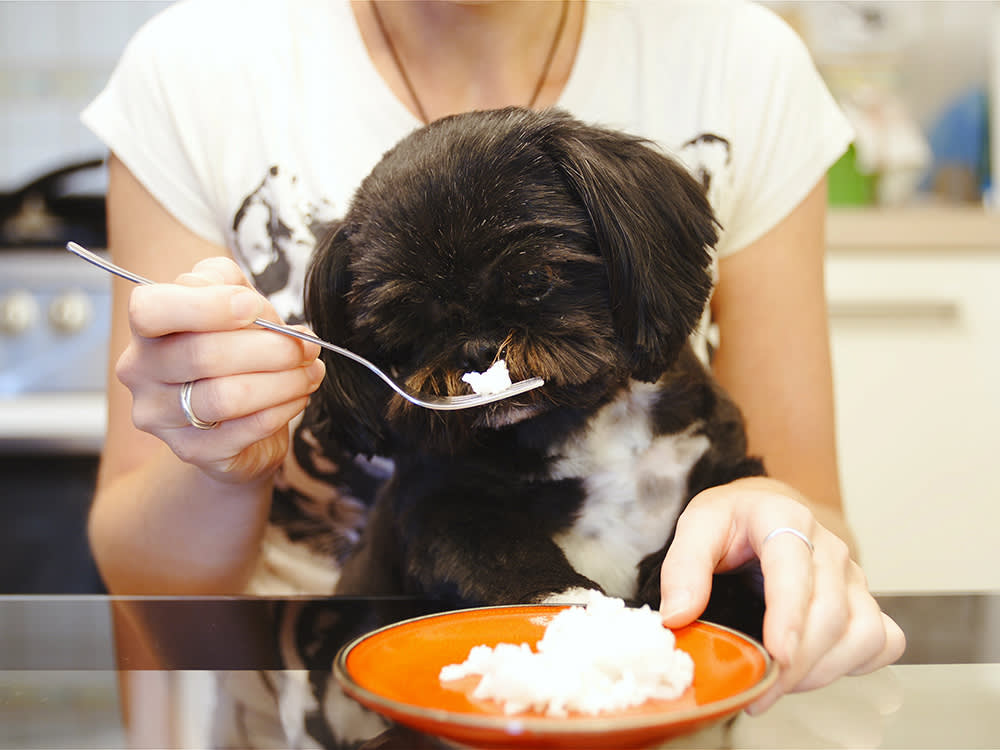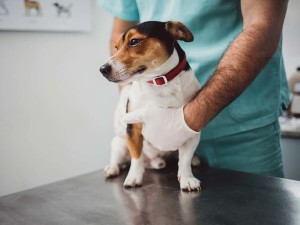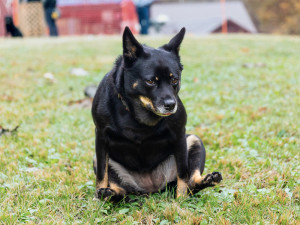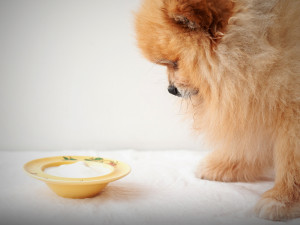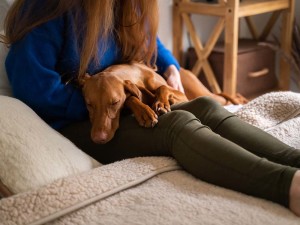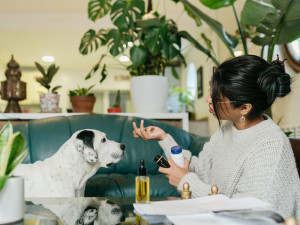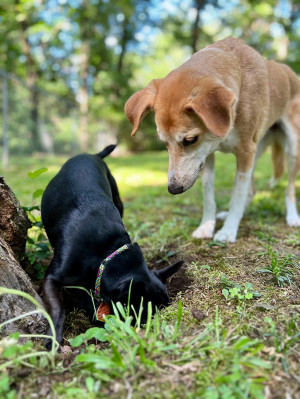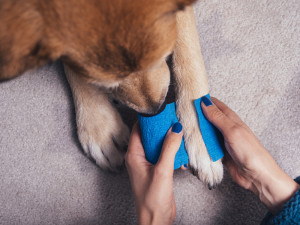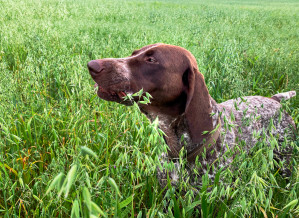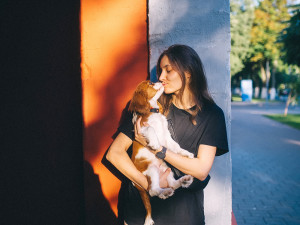How to Treat Your Dog’s Diarrhoea
Shudder. It happens to all of us
Dog diarrhoea. We don’t want to talk about it. We don’t want to look at it. We definitely don’t want to touch it. Our dogs’ diarrhoea is definitely not the most loveable thing about them, but s**t happens. As much as we don’t want to, we have to deal with it. So here’s how we deal with it.
What is dog diarrhoea?
Dog diarrhoea is probably the most common complaint received by veterinarians. It’s such an easy condition to identify (the smell, the texture... you get it). Minor gastrointestinal problems are common and can be treated at home safely and effectively.
At the same time, there are dogs whose stomach problems, if not addressed early enough by a vet, suffer more than they need to. Find out the causes of dog diarrhoea, how to stop it, when you should be worried and how to help your dog feel better fast.
What are the common causes of diarrhoea in dogs?
Diarrhoea is not a disease; it is a symptom of a dysfunction of the gastrointestinal tract (GIT). In simple terms, diarrhoea in dogs is caused by something that hinders the intestine’s ability to absorb or secrete water. Here are some of the causes of diarrhoea in dogs:
When associated with bad food or food-borne pathogens, diarrhoea serves to rapidly remove pathogens from the GIT before they have a chance to be absorbed and cause more damage.
Occasional diarrhoea is to be expected in dogs. Mild bouts of diarrhoea will often resolve within two to four days on their own or with simple home remedies (see below).
Most of the time, diarrhoea is caused by dietary indiscretion (eating too many treats, garbage, or table scraps) or stressful circumstances and is self-resolving.
Other common causes of diarrhoea in dogs may include allergies, viral infections, inflammatory bowel disease, ingestion of toxins, parasites, pancreatitis, colitis or other illnesses.
When to visit your veterinarian for diarrhoea in dogs
Warning signs that your dog’s diarrhoea needs medical attention include:
black, tarry stool, or stool with copious amounts of fresh blood (bright red)
loss of appetite
marked lethargy
frequent vomiting
signs of abdominal pain, avoidance response when the belly is touched
bloating, groaning or panting rapidly
lasts longer than 48 hours (as it can rapidly weaken puppies and geriatrics, or dogs with chronic diseases, they may need veterinary attention sooner)
When it comes to diagnosing the cause of diarrhoea, the colour and consistency of your dog’s poo actually says a lot about their health. Take note of the colour and consistency of their stool and any other symptoms your dog is experiencing. This information will help your vet determine what’s going on with your pup and get them back to normal.
How can I treat mild cases of diarrhoea at home?
When your normally healthy dog has mild diarrhoea and doesn’t meet any of the above criteria, it is best to start with some simple dog diarrhoea home remedies. To help your pup avoid dehydration, give your pup access to water and put your dog on a 24-hour rice-water fast (white rice balls that contain active probiotic cultures), then follow up with a bland diet based on white rice.
Making rice water
One of the best dog diarrhoea home remedies is rice water: fasting your dog allows their GIT to rest and recover from whatever irritation it has received. During the fast, make sure your dog has plenty of rice water to drink. (Rice water is the creamy liquid that results from boiling white rice in water.) It’s important to use a good quality white rice; ‘minute’ rice does not work and brown rice has too much fibre in it, which does not help firm the stool because it speeds up how fast digested material moves through the colon.
To make rice water, boil 225g of white rice in one litre of water for 10 minutes or until the water turns creamy white. Keep the lid slightly uncovered. Strain the liquid and allow it to cool. You can serve the rice water to your dog as often as they will drink it. If they aren’t interested, mix a teaspoon of chicken baby food (or another flavour that your pet likes) in the rice water to increase palatability. (Heads up: 225g of white rice makes a lot of rice water!)
Adding probiotics
Another great dog diarrhoea home remedy is to introduce probiotics into their diet: probiotics are living bacterial cultures intended to assist the body’s naturally occurring gut flora in reestablishing themselves – they may also help speed recovery. These live microorganisms are found in yoghurt and are also available from health food stores or your vet as high-potency powdered acidophilus cultures, which are more effective than yogurt for diarrhoea. Mix these cultures into the rice water that you are serving your pet during their fast.
As you reintroduce solids, continue to add probiotics to your pup’s food. Use at least two to 10 billion viable bacterial organisms in each meal you serve; to determine the level of ‘viable organisms’ or ‘colony forming units’ (CFUs) present in a probiotic such as acidophilus, look on the label – a reputable manufacturer will list that number.
Reintroduce solids slowly
When it comes to dog diarrhoea home remedies, feeding your pup a home-cooked bland diet can be beneficial as you reintroduce solids. After the fast is over, start your dog back on a diet of white rice cooked with extra water and mixed with small amounts of baby food for protein and flavour. To make white rice, use 500–750ml of water for every 225g of dry rice.
Beyond rice, other simple foods that can help relieve your dog’s diarrhoea include cottage cheese, peeled boiled potatoes and plain chicken breast. Remember, this bland diet is not balanced, so do not feed it to your dog for more than a few days.
Can I give over-the-counter medications to my dog for diarrhoea?
When it comes to dog medicine for diarrhoea, your veterinarian may recommend the oral administration of an intestinal protectant, a suspension containing bismuth subsalicylate or an antidiarrhoeal. Always confirm the correct dose and best use of these medications with your vet. There are several instances where you should not use these medications:
Caution is required when using over-the-counter medications in Collies, Shelties and Australian Shepherds because of a possible genetic mutation.
They are not recommended for puppies, seniors or dogs with other health conditions, such as liver or kidney disease.
These medications should never be given to cats, as they contain salicylates, which are potentially toxic for felines.
Dosages for the two intestinal protectants mentioned above are approximate (call your vet to confirm). Use the liquid medication, not the tablets, and give about 1ml of liquid for every 4.5kg of body weight up to three times daily. The bismuth subsalicylate has more anti-inflammatory activity, so it may work better on patients with abdominal cramping.
If your dog’s diarrhoea is severe, your veterinarian may want you to also give them some loperamide. This can help to reduce fluid loss until the rice-water fast, white rice and acidophilus, and the dog’s own healing system can overcome the diarrhoea. The published dose for loperamide in dogs is 2mg (the standard-size capsule) for every 18 to 20kgs of body weight, two to three times daily.
This information is not meant to be a substitute for veterinary care. Always follow the instructions provided by your veterinarian.
Frequently asked questions
How is diarrhoea diagnosed in dogs?
Diarrhoea in dogs is diagnosed by answering a series of questions including the consistency of the poo, colour, frequency and whether there is blood.
How do you prevent diarrhoea in dogs?
Probiotics can be used to naturally prevent diarrhoea in dogs – make sure they contain at least two of these strains: S. boulardii and B. subtilis should be at least one billion CFU.
What are the warning signs of diarrhoea in dogs?
The number one warning sign of diarrhoea in dogs is loose stools – if it’s watery and soft, and more frequent than normal. Other signs include lethargy and vomiting.
